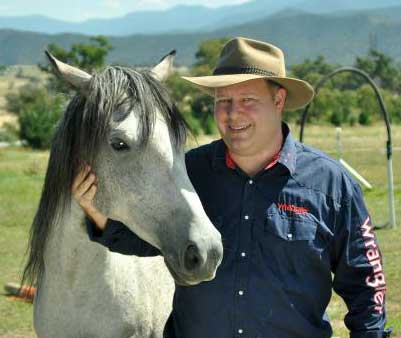by Philip Nye

What is disengagement?
Firstly, it’s the opposite of engagement or full power as a disengaged horse has relaxed and yielded all its power. It has released its power to the hindquarters mainly but also softened and released its shoulders, head, and neck. The horse overall is relaxed, submissive, and yielding.
So how do we achieve this?
Disengagement is asked for primarily with the inside leg in conjunction with an indirect rein. An indirect rein, therefore, becomes a relax, settle down, life out, control rein for downward transitions compared with a direct rein which is life up, go somewhere communication rein for upward transitions.
Why do we need to disengage our horse?
A horse who has been taught to disengage has been taught to relax, submit and yield from nose to tail. This gives us a tool to settle and control frightened and/or disrespectful horses and gives us greater communication with the horse as we can influence the nose, neck, shoulder, and hindquarters more effectively.
Disengagement gets the horse in a great frame of mind to learn everything else e.g; forwards, backward, sideways, one rein, and loose rein riding and direct rein.
When do you use disengagement?
Generally for all downward transitions e.g. trot to walk or canter to trot and whenever the horse locks up or pushes against us with the nose, neck, shoulder, or hindquarters. We can disengage the horse to soften and yield the whole horse then return to the original movement. You may need to repeat it many times.
Horses know instinctively that to disengage and voluntarily give away their power is not a clever thing to do especially if there are predators or other horses wanting to play dominance games around. So be patient with your horse and be patient with yourself. It is an achievement to simultaneously keep the nose and neck soft, the shoulders yielding a little and the hindquarters yielding a lot. Slow and right beats fast and wrong, reward a try, and rest often.
So how do we disengage our horse?
Preparation from the ground is important. Teach the horse to yield his hindquarters both as a fingertip yield (porcupine game) and as a driving game. Have lateral flexion going softly from the ground first, then from the saddle at a standstill.

To apply an indirect rein and achieve a yield, shorten your inside rein and lift it over the horse’s mane, rolling your fingernails uppermost to soften and flex the nose and neck. Holding the rein up over the mane is to indicate the shoulder to yield a little from the rein.
As the rein lifts, your inside leg takes a feel on the horse’s side indicating to the hindquarters to yield. If the nose, neck, shoulders or hindquarters get stuck and will not yield to a feel (phase 1 & 2), apply rhythmic pressure firmly (not roughly) to the stuck part of the horse (usually the hip) until it gives.
Remember that hands feel, hold, move laterally (phase 1 & 2) and apply rhythmic pressure as necessary (phase 3 & 4), and legs apply feel (phase 1 & 2) and if necessary are supported by rhythmic pressure of the hand, rope or stick (phase 3 & 4). Hands never pull – legs never kick.
Start your phases as softly as possible and increase them slowly and gently to give the horse time to think about a response rather than react to too much pressure.

Phil lives on a sheep property in Tasmania, Australia, and still trains horses for his own enjoyment.





This was a really good article. I had started the hind quarter disengagement a few years ago on my horses, but never knew what it was for or how to use it in the saddle. Now I do and I’m thankful to you for educating me. Blessings, M.B.